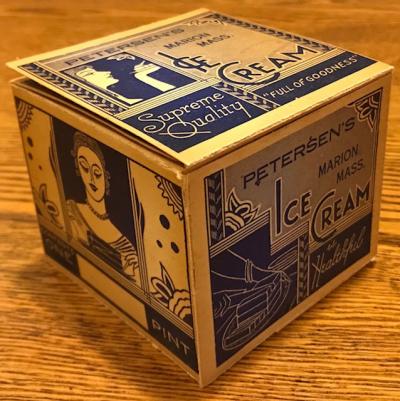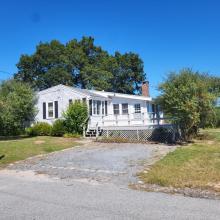Former family ice cream shop has rich history
There's nothing like ice cream on a hot summer day, and in 1920s Marion, no one knew that better than Viggo V. Petersen.
After immigrating to the U.S. from his native Denmark, Petersen worked as a chef for the family of Harry E. Converse at The Moorings. When the house was torn down and Petersen's services were no longer needed, the Converse family gave him the equipment for making ice cream, and a business was born.
Petersen opened his ice cream parlor in the carriage house/barn next to 9 Cottage Street in 1921, making what became known locally as New England's best homemade ice cream.
Sippican Historical Society Archivist Leslie Piper found several examples of Petersen's artfully designed ice cream boxes in the Sippican Historical Society archives.
One pint box displays images of beautiful women gazing in anticipation at the frozen treat. The ornately decorated box proclaims that the ice cream is also "healthful," "supreme quality," and "full of goodness."
Viggo C. Petersen took over the ice cream business after his father's death in 1941, but. due to both wartime cream shortages and the young Petersen's enlistment in the U.S. Army Medical Corps, the ice cream shop was forced to close.
Hoping to learn more about this enterprising family, Piper searched the historical society database and found the John Bates Diaries. The 143-volume collection contains the daily diaries of John Bates from 1908 to 1960.
A clipping from the Dec. 22, 1942 edition of The Standard-Times glued into that day's entry of John Bates' diary records local reaction to the ice cream shop's closing:
"Patrons of Petersen’s will have to find a new place from which to purchase their ice cream, as the popular parlor is now closed for the duration. Closing of the Library for two days a week and reduction of hours on other days caused little comment, but the closing of the ice cream place after being established on Cottage Street for 25 years, has set people talking."
The ice cream shop reopened again after the war, closing for good in the 1970s.














